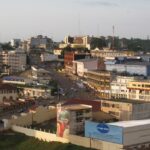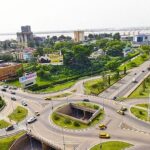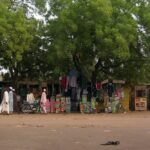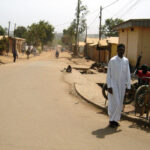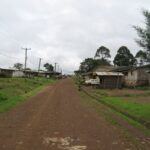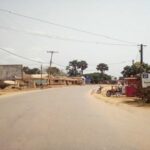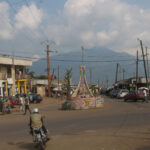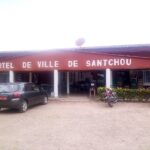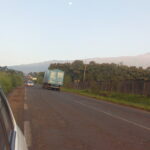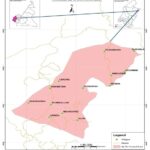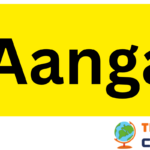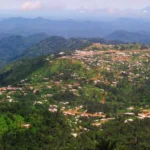Wabane
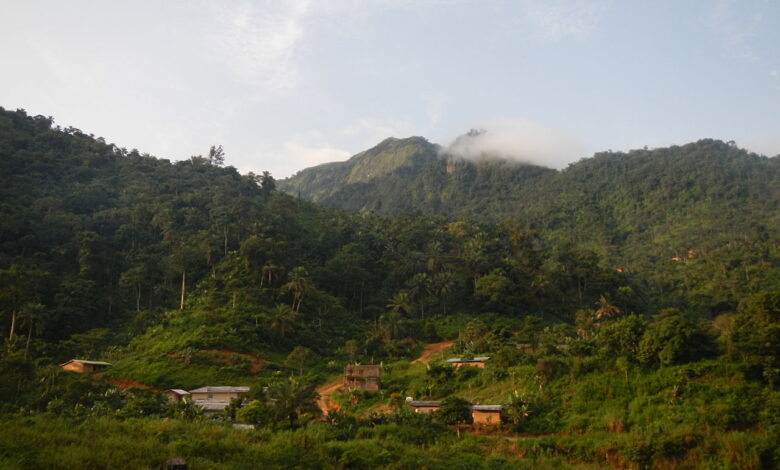
Wabane is a municipality located in the Lebialem division of the Southwest Region in Cameroon. It was founded in 1988 and is situated in a mountainous area near the borders of the Southwest, Northwest, and West regions. The main ethnic group in Wabane is the Mundani people, and the principal economic activity is agriculture.
Map
History
The history of Wabane dates back to the late 1980s when it was selected and named at the second conference of the Mundani Elite Development Association (MEDA). On December 31, 1988, the foundation of the town was laid, and the Wabane Charter was signed. Situated at the crossroads of the Bamumbu, Bechati, and Folepi clan lands, Wabane holds a significant cultural and historical significance for the Mundani people. The land on which Wabane is located was generously donated by these three clans, symbolizing their unity and shared heritage.
Geography
Topography
Wabane’s geography is characterized by three distinct topographical regions. As the town marks the end of the Manyu plain, it transitions into an undulating terrain with prominent mountainous features. The altitude ranges from the lowland Nkong at 72 meters to the elevated regions of M’mouck Leteh at 2,200 meters. The Bamumbu Fondom, in particular, boasts steep hill slopes, narrow crests strewn with boulders, and deep valleys. On the other hand, M’mouck Leteh showcases broad hilltops and gentle slopes, ideal for intensive vegetable farming.
Climate
Wabane experiences two distinct seasons – the dry season from November to March and the rainy season from April to October. The lower belt, known as lower Mundani, exhibits a hot tropical forest climate, while the middle belt enjoys milder temperatures due to its higher altitude. The upper belt, characterized by tropical savanna vegetation, experiences temperatures that can drop below 18°C during December and January. The combination of the cold, dry Harmattan winds and warm, wet monsoon winds creates the unique climatic conditions in Wabane.
Soils
The variation in altitude and vegetation gives rise to different soil types in Wabane. The lower belt and parts of the middle belt feature sandy-loam to reddish alluvial soils, which are highly suitable for plantation agriculture. Oil palm and cocoa plantations thrive in these areas, alongside subsistence crops like plantain, cassava, cocoyam, banana, and pepper. In contrast, the upper belt boasts rich alluvial and silty-loam soils interspersed with chalk and clay. This fertile soil composition supports high-value commercial market gardening crops such as Irish potatoes, cabbage, carrots, and leeks.
Wind Types
Wabane experiences two main types of winds – the North East Harmattan winds during the dry season and the Southeast monsoon winds during the rainy season. The arrival of the Harmattan winds in November brings violent gusts, particularly in the upper plateau, causing damage to buildings and crops. The transition period between the Harmattan and the onset of the monsoon winds in March-April is marked by another bout of strong winds. The monsoon winds, however, operate as gentle breezes. The combination of these winds creates the distinct cold, dry season and warm, rainy season typical of Wabane’s tropical climate.
Hydrology
The main rivers and streams in the Wabane area are primarily located in the lower and middle belts. Additionally, numerous drinkable springs can be found throughout the municipality. The Meyi River, originating from Mount Bamboutous, merges with other tributaries downstream, eventually forming the River Manyu. During the rainy season, these streams can overflow their banks, becoming fast-flowing and potentially hazardous to cross. The upper tropical savanna region experiences fewer streams and springs, leading to water scarcity during the dry season for both household use and irrigation.
Vegetation
Wabane boasts three distinct vegetation types within its boundaries. The lower parts of the municipality are covered in tropical forest vegetation, stretching from Nkong and Bangang to Besali and Egumbo. The middle belt showcases a wooded savanna, encompassing villages like Talung, Alongkong, Nchingang, and Banteng—finally, the upper regions of M’mouck Leteh and Magha feature tropical savanna vegetation. The lower tropical forest and wooded middle zones host a diverse range of flora, including timber and non-timber forest species and medicinal plants. The tropical savanna zone, characterized by grassy vegetation, also contains patches of stunted forest trees and planted eucalyptus trees.
Fauna
The diverse vegetation in Wabane provides a habitat for a variety of wildlife species, including mammals, reptiles, birds, and insects. The Environment and Rural Development Foundation has identified several rare or endangered animals in the area, including chimpanzees, western lowland mountain gorillas, African civets, genets, foxes, stone hayracks, antelopes, and deer. Avifauna species such as Bannerman’s turaco and parrots also contribute to the rich biodiversity of Wabane. Efforts are underway, in collaboration with the Ministry of Wildlife, to establish a sanctuary in the lower Mundani zone to protect these endangered primates.
Culture
Population
The population of Wabane is predominantly made up of the Mundani clan, which can be further divided into the lower Mundani and upper Mundani. The Mundani people trace their origins back to Widikum in the Northwest Region of Cameroon. The population of Wabane is predominantly young, with ages 0-14 accounting for 42% of the total population, and ages 15-44 making up 31%. Most of the population is engaged in agriculture, with cocoa and palm oil production being significant economic activities. The village of Mbecho, the former capital of the Wabane Sub-Division, has a unique population due to its historical significance.
Ethnic Groups
In addition to the Mundani clan, Wabane is home to various other ethnic groups, including the Bangwas, Bamilekis, Bayangs, Metas, and Bassossis. These groups contribute to the cultural diversity of the municipality, each with its own distinct traditions and dialects. The Bangwa people, in particular, play a significant role in shaping the identity of Wabane, as they are the largest ethnic group and share a common language known as Nwe.
Religion
Wabane is a place of religious diversity, with Christianity being the most widely practiced religion in the municipality. Denominations such as Presbyterian, Catholic, Full Gospel, Baptist, and Apostolic have a strong presence in the area. These religious groups not only provide spiritual guidance but also contribute to the social welfare of the community by running health units and schools.
Land Tenure System
The land tenure system in Wabane is primarily hereditary, with ownership passed down through generations. The majority of housing in Wabane consists of non-permanent structures, predominantly made of mud with thatched or corrugated iron roofs. Water sources, such as springs, play a vital role in determining settlement patterns, with many people preferring to live near these natural water supply points. The village councils, led by chiefs or fons, assist in governing the communities, with quarter heads and Nkems acting as intermediaries between the council and the local population.
Economy
The economy of Wabane heavily relies on agriculture, which accounts for approximately 95% of the municipality’s economic activity. The fertile soils and favourable climate support the cultivation of various food and cash crops, including cocoa, palm oil, maize, cassava, groundnut, cocoyam, pepper, beans, okra, Irish potatoes, cabbage, carrots, and leeks. Livestock rearing and fishery activities also contribute to the local economy. However, the enclave nature of Wabane presents challenges for economic diversification, resulting in limited investment in other sectors. Nonetheless, the municipality offers immense potential for growth and development.
Assets, Potentials, and Constraints of the Biophysical Milieu
Wabane’s unique geographical features, climate, vegetation, and soil composition provide the area with a range of assets, potentials, and constraints. Its agricultural potential is evident in the variety of food and cash crops grown, making it a significant contributor to the national food production. The presence of endangered species, such as chimpanzees and western lowland gorillas, highlights the importance of conservation efforts. The area’s natural water sources, including rivers, streams, and springs, offer opportunities for irrigation and rural electrification. However, the rugged topography and limited transport network pose challenges in terms of accessibility and soil erosion.
Infrastructure
Wabane’s infrastructure plays a crucial role in supporting the needs of the local population. The municipality has various facilities, including healthcare centers, educational institutions, and administrative offices. The Wabane Council, alongside other local development actors, works towards improving the quality of life for residents. Collaboration with NGOs, such as the Environmental Rural Development Foundation (ERuDeF), further enhances infrastructure development and environmental conservation efforts.
Touristic Information
Wabane offers a wealth of tourist attractions for visitors to explore. The Anyoh-Ndeoh waterfalls, caves, and tropical evergreen forests in the lower zone provide breathtaking sights and opportunities for outdoor activities such as hiking and birdwatching. The municipality’s rich biodiversity, including endangered species like chimpanzees and western lowland gorillas, offers a unique experience for wildlife enthusiasts. Wabane’s cultural heritage, reflected in traditional dances, festivals, and art, also adds to its appeal as a tourist destination.
Conclusion
Wabane is a hidden gem in Cameroon, offering a combination of stunning landscapes, rich cultural heritage, and untapped economic potential. From its diverse geography and vibrant culture to its thriving agricultural sector, Wabane has much to offer both residents and visitors. As efforts continue to promote sustainable development and preserve the area’s natural beauty, Wabane is poised to become a destination of choice for those seeking an authentic Cameroonian experience.
